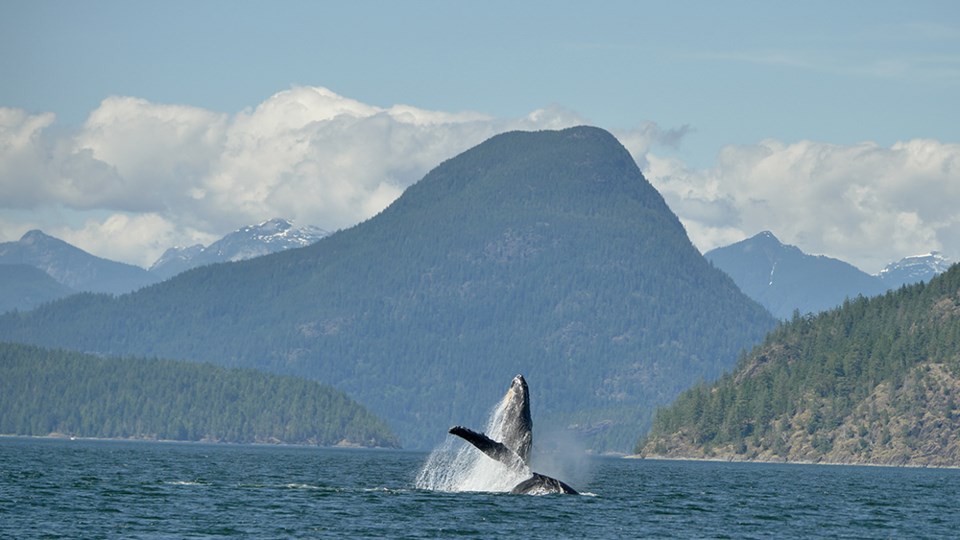Many of the whales, dolphins and porpoises found throughout the world can be seen along the coast of BC, according to the Whales and Dolphins BC website. For orca, there are three known types throughout the world: resident, transient and offshore.
Whale sightings in qathet
Last summer in the qathet region, whale and dolphin sightings were in abundance. But with an increase in whale numbers, an increase in potential human created harms to these social ocean mammals is becoming a concern.
Mitigating threats
The federal government of Canada/Department of Fisheries and Oceans (DFO) put out new regulations, in order to protect resident southern killer whales: "Vessels must stay 400 metres away from all killer whales in southern BC coastal waters between Campbell River and just north of Ucluelet until May 31, 2024, and falls under the Canada Shipping Act."
The Canadian government stated that the three biggest threats to southern resident killer whales are reduced food availability (salmon), sound and physical disturbance, and contaminants in the water.
"My biggest concern is with boaters not paying attention, not being aware and not going slow enough," founder and director of Wild Ocean Whale Society (WOWS) Susan McKay told the Peak. "We've had a lot of vessel strikes [in qathet], especially with humpbacks, and the other thing has been entanglement issues."
Entanglements and hits
McKay runs WOWS, an educational resource, and a whale sighting database. The public is encouraged to document any cetacean sightings in the region by going to whalesanddolphinsbc.com.
"We've been raising public awareness on whales for quite a long time now," said McKay. "At least it appears that people are paying a bit more attention."
Southern resident orcas depend on only one food source, and that's salmon.
"There's not that much salmon in the wintertime, so what we see most of is the transient orca that tends to stay around BC waters throughout the year," said Whales and Dolphins BC volunteer, editor and writer Ivan Ng.
Boater awareness
WOWS is trying to increase boater awareness and how crab traps can cause entanglements for dolphins and other sea mammals if their line is not used properly.
"We've had some white-sided dolphins coming through,” said McKay, “and I think the last sighting was down by Myrtle Point."
According to Whales and Dolphins BC website: "Entanglements in commercial and aquaculture gear cause significant injuries and sometimes death to whales in BC. Gear such as rope and nets wrap around the pectoral fins, tails and mouths of cetaceans, cutting into their body and affecting their ability to swim and feed.”
The website also indicated that whales can also be anchored by crab traps, prawn traps and aquaculture gear, which can lead to drowning.
Education to help cetaceans
McKay emphasized that education is important to raising awareness and making changes to help out whales and dolphins.
"Raising awareness about the increase in the number of whales in our waters is key; boaters can look for signs of a whale or dolphins nearby and slow down," added McKay.
Humpback and fin frequently hit
Boats should stay under 10 knots when in an area where whales frequent. Humpbacks and fin whales are the most frequently hit because they dive deep underwater and can resurface unexpectedly.
For about 10 years a camera set up by WOWS has been pointed toward Comox and the ferry terminal in Westview in order to observe whales in the area.
Join the Peak’s email list for the top headlines right in your inbox Monday to Friday.




